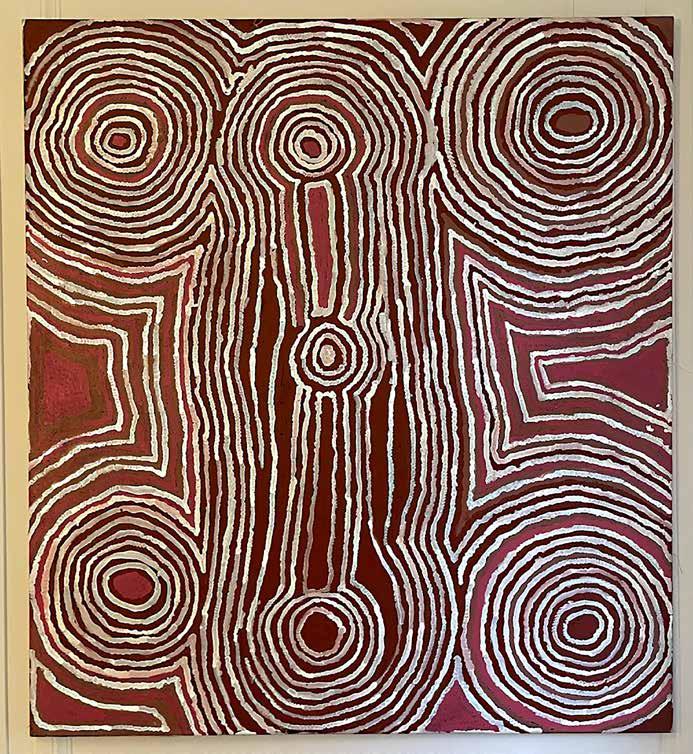
2 minute read
Australia
As we celebrate the theme of art for this edition of Diplomat Affairs magazine in the run up to the PAN exhibition, I am delighted to be able to share with you some wonderful Indigenous art that brightens up the rooms of the Australian Ambassador’s Residence – a building that itself is steeped in Dutch history and has two hundred year old European tapestries depicting beautiful country scenes.
BY Y H.E. MR MATTHEW NEUHAUS
AAustralia is home to the world’s oldest continuing culture. Australia’s Indigenous peoples have lived on and managed the land for more than 60,000 years . After early years of conflict, successive Australian Governments have joined with Aboriginal and Torres Strait Islander peoples to work towards reconciliation and social justice. In 2008, the Australian Parliament passed a motion of Apology to Indigenous
Australians for past mistreatment and injustices.
In July each year, NAIDOC Week celebrations mark the history, culture and achievements of
Aboriginal and Torres Strait Islander peoples which is now so integral to Australia’s sense of itself. To showcase the huge diversity of Indigenous art, the embassy organized an exhibition in 2019 that focused on the theme of gender justice and women’s law and displayed artworks from the wonderful collection of the Volkenkunde Museum in Leiden. I am glad to say that some of the pieces exhibited have remained at the Residence with permission. A personal favourite is Tjinjtilu Soak by Lucy Yukenbarri Napanangka, depicting Marpa, a central rockhole in the Kimberley region in northwest Australia. Lucy is one of the senior Law women for the Tjukurrpa (Dreamtime) Law and a key source for the stories associated with this place, which is important women’s country where ceremonies are performed. In the painting we see sandhills, stunted trees, and belts of dry ground and a large soakwater.


Katarra Nampitjinpa (Pintupi, c.1940-1998) Secret Women’s Business at Ulkapi, 1996
While having its distinct own style, the type of painting blends in nicely with the interior décor of the Residence sitting room. An equally striking painting welcoming guests that enter the main hall of the Residence is titled “Secret Women’s Business at Ulkapi” by Katarra Nampitjinpa. Nampitjinpa’s family members are active “dancing women” who travel widely to participate in annual ceremonies and women’s law meetings. Her tjukurrpa (place or object that infers knowledge to someone or something) is the porcupine. Her story is told in bright colours often utilizing orange, red and yellow to mirror the ochres that are used in ceremonial body painting. In her tjukurrpa story there is often the porcupine scurrying about rock holes and hiding in places looking for sustenance while nearby the women are themselves hunting, laying in wait for the porcupine. Australia’s sense of identity and international diplomacy is increasingly shaped by Indigenous cultures and we hope that others too will be inspired by these artworks which represent that sense of shared identity across different cultures and history.










